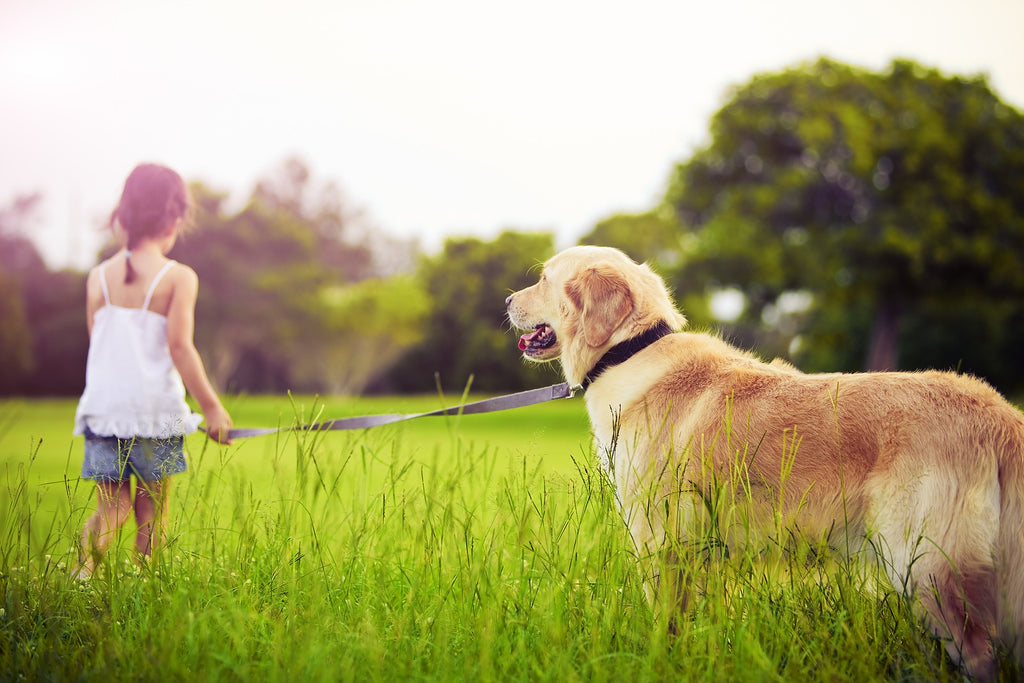Is Exercise Safe for Dogs with Cancer?

Learning that your beloved pet has cancer is a difficult diagnosis. It's a challenge for dog owners to sort out the cancer treatment options, like radiation therapy, veterinary medicine, and diet plans, as well as all of the other bits and pieces of information that come with canine cancer management and taking care of your dog at home.
One of the many considerations in canine cancer is how much exercise you should encourage your pet to get, starting with "Should I continue to walk my dog?"
Along with riding in the car and playing fetch, going for a walk at least once a day is among your dog's major joys in life. It's rare for vets to suggest that pet parents stop walking their dogs because of a cancer diagnosis. There are certain kinds of canine cancer, however, that require a different approach.
- Chemodectoma, hemangiosarcoma, and other tumors affecting the heart. Tumors located around the heart may cause circulation to "back up" in the veins that lead to heart and make mild exercise a major workout for your dog. It may be possible to take short walks slowly, and to play a less vigorous game of fetch with a shorter throw. A higher risk for exhaustion is possible.
- Osteosarcoma. Osteosarcoma is a cancer of both the osteoblasts, the cells that build up bone, and the osteoclasts, the cells that break down bone, so it can be constantly remodeled to bear changing loads. Osteosarcoma or bone cancer upsets the architecture of bone so that fractures are more likely. Before treatment, even something as simple as stepping off a curb may cause a fracture that causes your dog a great deal of pain. After the bone tumor is removed or brought into remission, however, your veterinarian will probably advise you make sure your dog gets some outdoor time every day.
- Tumors affecting the lungs, usually caused by metastasis of tumors elsewhere in your dog's body. Even dogs with lung cancer or lung tumors can often tolerate a modest amount of exercise. Signs that your dog has had enough are (1) excessive panting, coughing, gagging, or difficulty breathing (2) pulling the leash to steer you home, (3) walking at a much slower than normal pace, and (4) reluctance to keep moving. You may need to carry your dog home if any of these problems become apparent, as they are at an increased risk for overexertion.
As a pet owner, don't press your dog to exercise when there are obvious signs of pain. But do consider replacing physical activity with mental exercise to keep them busy.
Here are several activities that dogs with cancer can enjoy:
- Dogs with cancer will still enjoy their chew toys. Provide your dog cancer patient with chew toys they can enjoy even while lying calmly on their bed or in their crate.
- Make mealtime a game with puzzle toys that require your dog figure out how to get food or treats out of the puzzle. Just don't choose a physically challenging puzzle.
- Avoid spending too much time outdoors. You don't want your dog stimulated with a burst of unsustainable activity by an encounter with a bird, a cat, or another dog. When you do take your dog with cancer outdoors, use a leash to prevent overexertion.
There's one more thing: Show your dog unlimited affection. With dogs, nothing says "I love you" better than spending quality time with them. As part of their treatment plan, be sure to give them the best nutrition possible with Canine Biologics. Our human-grade food complemented by wild-caught Alaskan salmon oil and cancer-supportive supplements is the best food for dogs with cancer to keep them as active and happy as possible.

